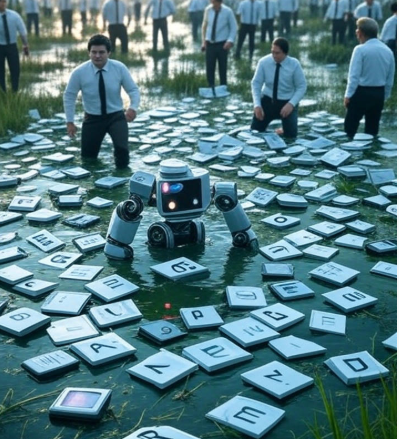Introduction
I’ve been a full-stack developer for about eight years now, mostly working with JavaScript, Python, and the occasional dive into mobile app development. Over the years, I’ve tried a lot of AI tools to make my life easier GitHub Copilot, JetBrains AI Assistant, you name it. But when I heard Anthropic’s Claude was rolling out a voice mode, I was intrigued. As of May 28, 2025, the feature is officially here, launched in beta for Claude’s mobile apps, and I’ve been playing with it for a few days. Posts on X from TechCrunch and others confirmed the rollout, and I couldn’t wait to see how it would fit into my workflow. Here’s my honest take on Claude’s voice mode, how it’s changed my day-to-day, the hiccups I’ve run into, and what I think it means for developers moving forward.
First Impressions: Talking to Claude Feels Surprisingly Natural
I first got access to Claude’s voice mode through the iOS app, which I downloaded on my iPhone after seeing a post on X about the beta rollout. The setup was straightforward log in, enable the voice mode feature (which was hidden behind a flag until recently), and pick a voice. Claude offers four options: two male and two female voices, though I’ve also heard there are three distinct ones named Airy, Mellow, and Buttery. I went with a female voice that sounded warm and clear, which I later learned might be “Buttery” based on descriptions I read online. The initial setup felt a bit like configuring Siri, but the real difference hit me when I started talking.
My first command was simple: “Hey Claude, help me write a Python function to fetch data from an API.” I hit the push-to-talk button, spoke, and tapped send. Claude responded in a smooth, natural tone, breaking down the task into steps and dictating a clean requests.get() function with error handling. The response also appeared as scrollable text on the screen, complete with bullet points for clarity. I was impressed—it felt like pair programming with a colleague who could talk back. The voice quality was top-notch, with intonations and pauses that made it sound almost human, unlike some robotic assistants I’ve used before. I also tried uploading a screenshot of an API response, and Claude described it perfectly, even suggesting how to parse the JSON data. This multimodal capability voice, text, and image analysis was a game-changer for me.
Boosting My Workflow: Where Voice Mode Shines
As a developer, my days are packed with coding, debugging, and the occasional meeting. Claude’s voice mode has already started to carve out a spot in my routine, especially for hands-free tasks. One of the biggest wins has been brainstorming on the go. I often get ideas for new features while I’m out for a walk or driving to the office. Before, I’d have to stop, type notes into my phone, or worse, forget the idea altogether. Now, I just open the Claude app, hit the push-to-talk button, and say something like, “Claude, brainstorm some ideas for a React component to display user stats.” Claude responds with a list of ideas—like a card layout with charts or a collapsible table while I keep walking. It’s saved me so much time, and I feel like I’m capturing more of my fleeting thoughts.
Another area where voice mode shines is quick lookups. I was working on a Node.js project last week and couldn’t remember the exact syntax for a middleware function. Normally, I’d Google it or dig through Stack Overflow, but instead, I asked Claude, “What’s the syntax for an Express middleware that logs requests?” Claude responded in seconds with a clear example, dictating app.use((req, res, next) => {...}) and explaining each part. The fact that it supports web search (a feature that rolled out globally on mobile recently) means I’m getting up-to-date answers, often with sources listed in the text view. It’s like having a search engine that talks back, but smarter.
Voice mode has also been a lifesaver during long coding sessions. When I’m deep into a project, my eyes get tired from staring at the screen. Being able to ask Claude for help without typing like “Generate a regex to match email addresses” lets me rest my eyes while staying productive. I’ve even used it to dictate code comments or documentation, which Claude can auto-generate for snippets I upload. It’s not perfect, but it’s faster than typing out detailed explanations myself.

The Hiccups: Where Voice Mode Falls Short
Despite the wins, Claude’s voice mode isn’t flawless. One of the biggest frustrations is the lack of interruption support. It’s a push-to-talk system, meaning I have to speak, tap send, and wait for Claude to finish responding before I can say anything else. I tried interrupting once to clarify my request mid-response, but it didn’t register I had to wait until Claude was done. This makes the conversation feel less natural than I’d hoped, especially compared to something like ChatGPT’s voice mode, which I’ve heard handles interruptions better. I get why Anthropic went with this design it gives you control over when your message is sent but I’d love to see a more dynamic back-and-forth in future updates.
Another issue is language support. Right now, voice mode is English-only, though Anthropic has said French, Spanish, and German are coming later in 2025. I work with a few clients in Germany, and it’d be great to switch languages seamlessly. For now, I’m stuck using English, which isn’t a dealbreaker but feels limiting for a global tool.
I’ve also noticed occasional latency. When I ask something complex like analyzing a large PDF of API docs I uploaded—the response can take a few seconds to start, and the voice sometimes stutters if my internet connection isn’t great. It’s not a huge issue, but it breaks the flow when I’m in a rush. I’ve read that Hume AI, which integrated Claude with its Empathic Voice Interface, reduced latency by 10% using prompt caching, so I’m hoping Anthropic can optimize this further.
Broader Implications: What Voice Mode Means for Developers
Claude’s voice mode isn’t just a cool feature it’s a glimpse into how AI tools might evolve for developers. I can see this being a game-changer for accessibility. A colleague of mine has a visual impairment, and he’s already excited about using voice mode to interact with Claude hands-free. The fact that it can manage files, search the web, and even control a computer (a feature Anthropic introduced earlier) makes it a powerful tool for devs with disabilities.
It’s also shifting how I think about productivity. I’m spending less time typing and more time thinking through problems verbally, which feels more natural for brainstorming or debugging. I’ve even started using voice mode in meetings to quickly pull up code snippets or docs without fumbling with my laptop. It’s like having an assistant who’s always ready to jump in, which could change how teams collaborate on projects.
But there are concerns. I worry about privacy, especially since I’m uploading sensitive files like API docs. Anthropic has emphasized security, with measures like voice data encryption, but I’m still cautious. I also wonder about over-reliance. If I get too used to dictating everything, will I lose some of my hands-on coding skills? It’s a balance I’m still figuring out.
Tips for Using Claude’s Voice Mode Effectively
After a few days of tinkering, I’ve come up with some strategies to get the most out of Claude’s voice mode. First, be specific with your requests. Instead of saying, “Help me with a function,” say, “Write a Python function to validate a phone number with regex.” The more detail you give, the better the response. Second, use the multimodal features upload images or files to give Claude context, especially for complex tasks. Third, double-check the output. Claude’s great, but it’s not perfect, and I’ve caught a few small errors in suggested code that I had to fix.
Looking Ahead: The Future of Voice-Enabled AI in Development
Claude’s voice mode is just the beginning. I can imagine a future where I’m dictating entire app architectures to Claude while it generates the code, tests it, and deploys it all through voice commands. With Anthropic’s focus on integrating Claude with tools like Google Workspace, I’m excited to see how it might tie into my dev tools, like VS Code or GitHub. But I hope they address the interruption issue and expand language support soon.
For now, Claude’s voice mode has earned a permanent spot in my workflow. It’s not perfect, but it’s made my days more productive and even a bit more fun. If you’re a developer who hasn’t tried it yet, I’d say give it a shot—especially if you’re on the go a lot or just want a new way to interact with AI. What’s your experience been like with voice-enabled AI tools? I’d love to hear your thoughts!



